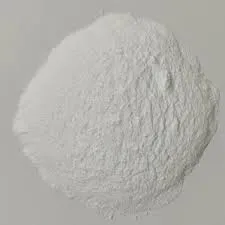Understanding Pentoxifylline Uses, Benefits, and Considerations
Pentoxifylline is a medication primarily used to improve blood flow and reduce the symptoms of conditions caused by inadequate blood supply, such as peripheral vascular disease. This article aims to delve into the various aspects of pentoxifylline pills, including their uses, benefits, possible side effects, and important considerations when using the medication.
What is Pentoxifylline?
Pentoxifylline belongs to a class of medications known as hemorheologic agents. It works by decreasing blood viscosity (thickness) and improving red blood cell flexibility, allowing for better circulation and oxygen delivery to the tissues. Originally synthesized in the 1960s, pentoxifylline has garnered attention for its potential to alleviate symptoms associated with blood flow issues.
Primary Uses of Pentoxifylline
The primary indication for pentoxifylline is to treat intermittent claudication, a condition characterized by pain in the legs due to inadequate blood flow during physical activity. Patients suffering from this condition often experience cramping, heaviness, or fatigue in their leg muscles, which can limit their mobility and quality of life. Pentoxifylline helps to increase walking distance and reduce discomfort, allowing individuals to engage more fully in daily activities.
Apart from treating intermittent claudication, pentoxifylline has been explored for other uses. Some studies suggest that it may be beneficial in managing conditions like diabetic neuropathy, venous ulcers, and chronic wounds, where improved blood supply can enhance healing. However, its effectiveness for these conditions is still under evaluation, and it is not officially approved for these uses in many countries.
The Benefits of Pentoxifylline
pentoxifylline pills

One of the significant advantages of pentoxifylline is its relatively favorable side effect profile compared to other blood flow enhancers. While it can cause side effects, they are typically mild and may include nausea, vomiting, dizziness, and gastrointestinal disturbances. Importantly, pentoxifylline is not associated with the same level of serious adverse reactions that some other medications in its class can provoke, making it a preferred choice for many patients.
Moreover, pentoxifylline’s mechanism of action not only improves blood flow but also exerts anti-inflammatory effects, which can contribute to its usefulness in various clinical settings. This dual action makes pentoxifylline an attractive option for clinicians looking to manage complications stemming from poor circulation and inflammation.
Considerations and Side Effects
While pentoxifylline is generally safe for most patients, certain considerations should be taken into account prior to use. Individuals with a history of hypersensitivity or severe heart conditions should consult their healthcare provider before starting the medication. Additionally, those who are pregnant or breastfeeding should discuss potential risks and benefits with their doctor.
As with any medication, patients should be attentive to the side effects. If more severe symptoms such as abdominal pain, rapid heartbeat, changes in mental status, or signs of an allergic reaction manifest, patients should seek immediate medical attention.
Conclusion
Pentoxifylline pills represent a valuable option for individuals suffering from conditions related to inadequate blood flow, particularly intermittent claudication. By improving circulation and offering anti-inflammatory benefits, it can significantly enhance the quality of life for many patients. However, as with all medications, it is essential to have a thorough discussion with a healthcare provider to weigh the benefits and risks, ensuring that pentoxifylline is the right choice for individual health needs. Whether used alone or in combination with other therapies, understanding pentoxifylline’s role can empower patients to make informed decisions about their treatment options.

